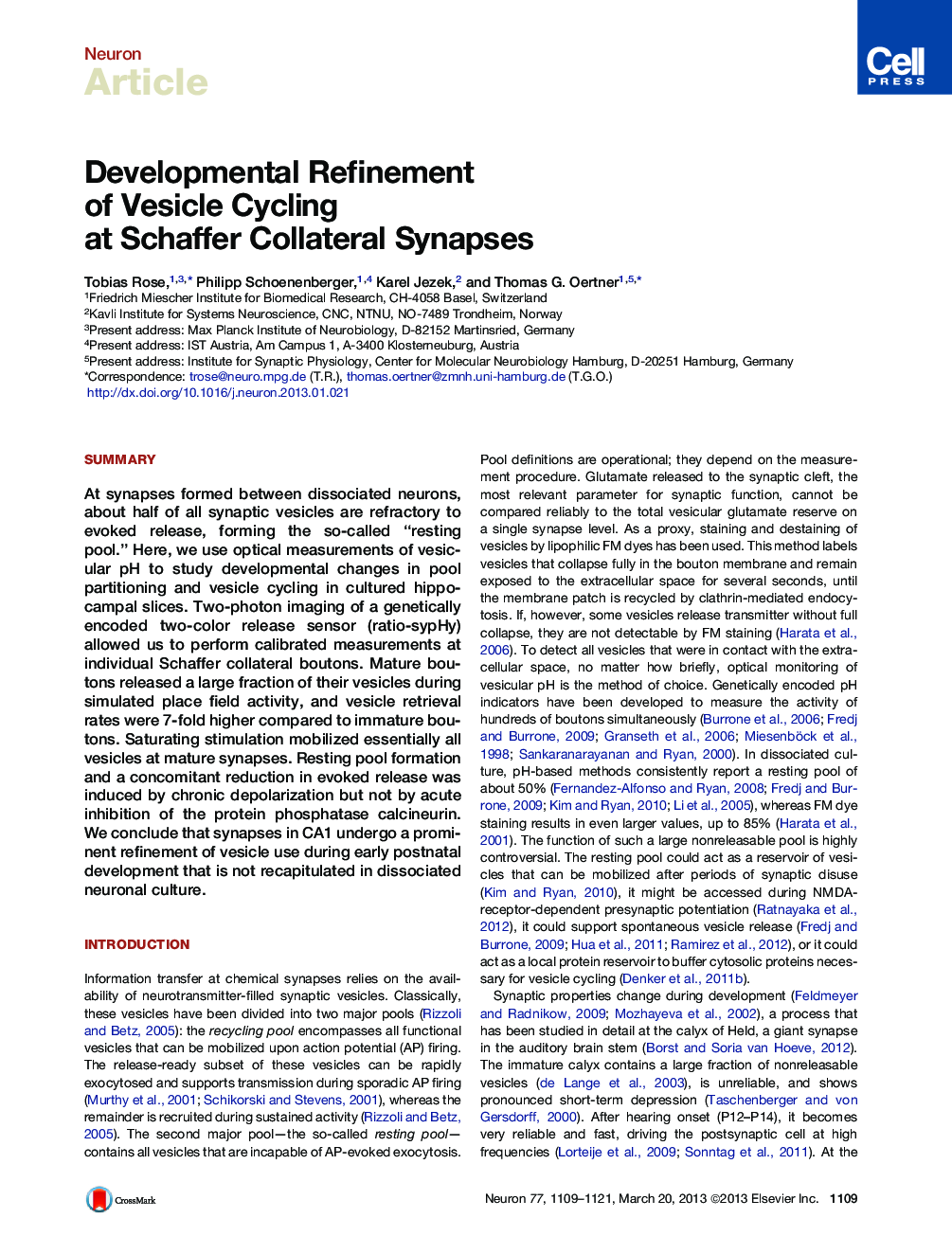| Article ID | Journal | Published Year | Pages | File Type |
|---|---|---|---|---|
| 4321538 | Neuron | 2013 | 13 Pages |
SummaryAt synapses formed between dissociated neurons, about half of all synaptic vesicles are refractory to evoked release, forming the so-called “resting pool.” Here, we use optical measurements of vesicular pH to study developmental changes in pool partitioning and vesicle cycling in cultured hippocampal slices. Two-photon imaging of a genetically encoded two-color release sensor (ratio-sypHy) allowed us to perform calibrated measurements at individual Schaffer collateral boutons. Mature boutons released a large fraction of their vesicles during simulated place field activity, and vesicle retrieval rates were 7-fold higher compared to immature boutons. Saturating stimulation mobilized essentially all vesicles at mature synapses. Resting pool formation and a concomitant reduction in evoked release was induced by chronic depolarization but not by acute inhibition of the protein phosphatase calcineurin. We conclude that synapses in CA1 undergo a prominent refinement of vesicle use during early postnatal development that is not recapitulated in dissociated neuronal culture.
► New genetically encoded indicator to quantify vesicle cycling in intact tissue ► Schaffer collateral boutons strongly increase endocytic capacity during development ► Resting pool size is developmentally regulated and scales with synaptic output ► Mature Schaffer collateral boutons essentially lack a resting pool
